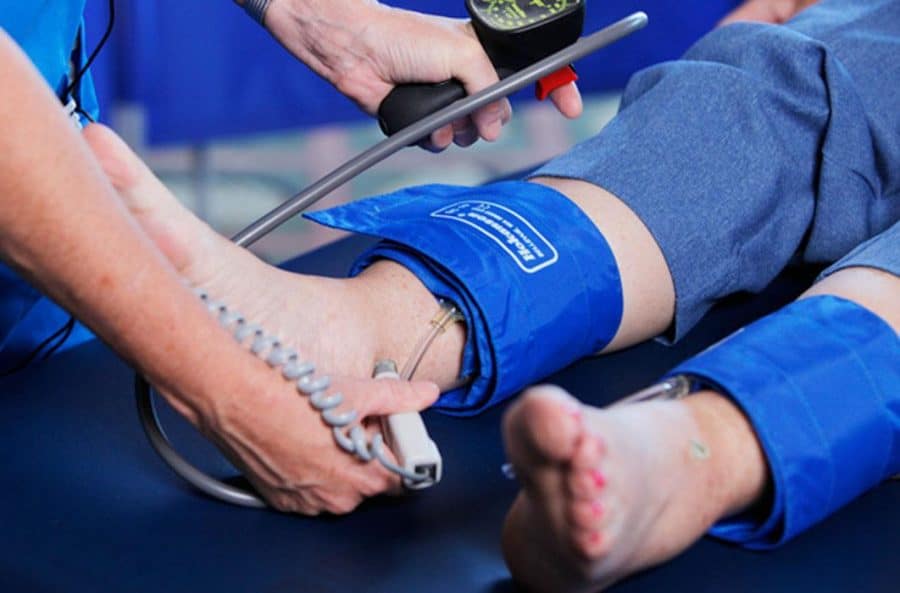An ankle brachial index, or ABI, is a non-invasive bedside medical tool that compares the systolic blood pressure of the arm to that of the ankle. They are utilised to detect signals of peripheral arterial disease in the lower extremities.
The ABI is definitely one of the best diagnostic tests and any trained clinician in a clinic, hospital, home care setting or nursing home can perform this test. All you need is the ABI doppler and blood pressure cuff to perform the test.
So, why use an ABI?
There are a number of reasons why ABIs are used to assess people with lower extremity wounds. First, there has to be adequate blood flow for a wound to be healed, and the ABI will tell medical staff if the patient’s blood flow is impaired and how serious the impairment may be.
They also have to know the amount of compression that can be safely applied to the venous patient, as when the patient has a lower ABI reading lower is the compression amount that can be safely applied to the patient.
When you might need an ABI
Guidelines indicate when the use of an ABI is necessary, with typical standards dictating to the ABI any time a patient has a lower extremity ulcer; before applying compression wraps/garments; when foot pulses are not clearly palpable and if/when the lower extremity ulcer is has stopped healing.
How do the ABI numbers work?
It’s important to note that not everyone’s ABI is a reliable reading. In fact, patients with end-stage renal disease and diabetes may have incompressible vessels that cause an erroneously high ABI reading.
For such patients, another diagnostic test can be used, and this test is known as the Toe Brachial Pressure Index (TBPI). For patients with ABI readings, typically when the patient’s ABI number decreases, this indicates that the patient has lower extremity arterial disease as well as poor blood flow.
Any patient that exhibits an unhealthy score needs a vascular specialist referral. Bedside ABI interpretations are:
- 1.0 is seen as a normal reading;
- 0.9 indicates a more venous reading;
- 0.6-0.8 indicates a mix aetiology (arterial and venous);
- 0.5 or less indicates lower extremity arterial disease.
Wound care clinicians are required to meet certain care standards and have to follow expert guidelines. Performing an ABI reading for patients with lower extremity ulcers and before applying compression are just two of the important guidelines wound care specialists have to follow when it comes to performing ABI readings.
Given that wound care specialists have to take accurate readings, ABIs are essential to helping determine what kind of ulcer they are handling. This way, they are able to make important referrals to produce a solid, comprehensive patient treatment plan. This is vital as without the use of ABIs the patient could potentially lose their limb to the injury or ailment.
Hence, they are a great piece of medical technology
For the above reasons, it is clear to see why ABIs are an essential piece of medical equipment. They are the gold standard when it comes to taking an accurate ankle-brachial score, ensuring that medical specialists can determine whether or not the patient is experiencing a lower extremity arterial disease.
They continue to be the highest standard for conducting such readings, and are therefore used in all manners of care facilities across Australia.




